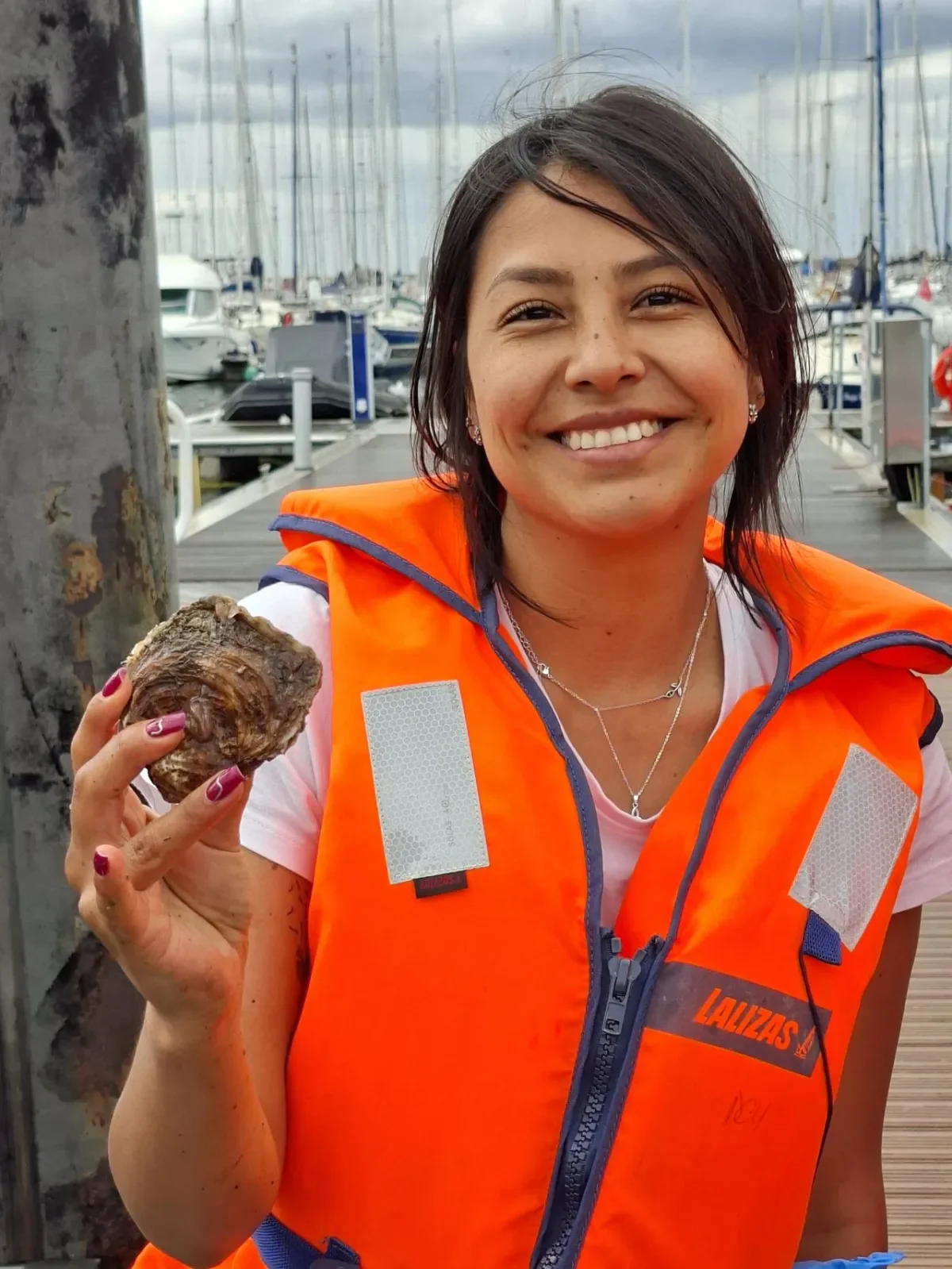

Making the Invisible Visible: Isabel’s Mission to Protect the Atlantic Through the iSECURE Project
From Gran Canaria to Ireland's Atlantic Coast
Along Ireland’s Atlantic coastline, a new chapter in marine science is being written by Dr. Marcia Isabel Cadena Aizaga, a postdoctoral researcher at Dublin City University (DCU).
Working with the DCU Water Institute, Isabel is part of the pioneering iSECURE project, which aims to reveal hidden threats in Irish coastal waters and offer innovative ways to protect marine ecosystems.
Growing up in Gran Canaria, surrounded by the sea, Isabel developed an early connection to the ocean. Living on a busy tourist island also made her aware of the pressures human activity places on coastal environments.
Her passion for the marine world led her to pursue a Bachelor’s degree in Marine Sciences, followed by a Master’s in Oceanography and a PhD in Environmental Sciences. During her studies, she explored the presence of UV filters from sunscreens in marine waters, contributing new insights into how these common personal care products can impact aquatic life. Now at DCU’s Water Institute, she brings that same passion and expertise to Irish waters.
The iSECURE Project: Detecting Emerging Pollutants
The iSECURE project is the first in Ireland to conduct time-and-space-based monitoring of emerging contaminants in coastal waters. These are substances that are not yet routinely monitored, such as residues from pharmaceuticals, industrial chemicals, and personal care product ingredients.
Isabel's research uses passive sampling methods to gather data. Unlike traditional grab sampling, which provides only a snapshot in time, passive samplers are deployed for extended periods and continuously absorb pollutants.
“Passive sampling has opened up new ways of seeing the ocean,” says Isabel. “It helps us detect pollutants that may be present at low levels but still pose risks to marine ecosystems.”
She is currently analysing data collected from mussels and passive samplers, building a robust dataset that reflects the chemical quality of Ireland’s coastal waters. These findings will guide national conservation strategies and provide useful data for future environmental policy and regulation.
Why Passive Sampling Matters
Passive sampling offers unique benefits for monitoring dynamic environments like Ireland’s Atlantic coast:
- Long-term tracking of contamination trends over seasons and tides
- Detection of low-level pollutants that may otherwise go unnoticed
- Better understanding of pollutant behaviour in marine ecosystems
This approach gives a clearer and more accurate picture of water quality, helping researchers, policymakers, and conservationists respond more effectively.
Learning from the Atlantic
Monitoring the Atlantic Ocean has taught Isabel the complexity and variability of marine pollution. Passive sampling has become a key tool in her research, enabling long-term tracking of contaminants and providing a better understanding of how they persist, fluctuate, and interact with marine life.
This work has deepened Isabel’s scientific expertise and has highlighted the importance of ongoing monitoring in dynamic marine environments like Ireland’s coastline. Her research contributes critical data to guide evidence-based environmental decision-making.
Driven by Passion
For Isabel, science is more than data. It is about protecting what we love. She is deeply motivated by her love for the ocean and her desire to protect it for future generations.
“My goal is to make the invisible visible,” she says. “Many pollutants go unnoticed, but their impact is real. Science helps us bring these issues to light.”
As the iSECURE project approaches completion, Isabel is focused on finalising the data analysis and ensuring that the findings are shared with scientific, public, and policy audiences. Her work reflects both a deep concern for the environment and a commitment to scientific excellence.
Isabel’s work on the iSECURE project exemplifies how curiosity, innovation, and dedication can transform our understanding of the ocean. By shining a light on hidden pollutants and their effects, she is helping to shape a healthier, more resilient future for Ireland’s coastal waters, reminding us that even the smallest discoveries can make a big difference.
